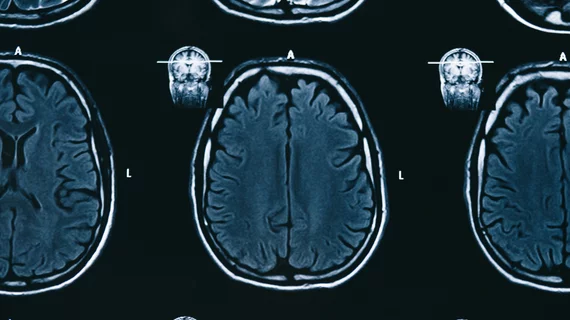The radiology department at the Antwerp University Hospital in Belgium has incorporated an Aidoc tool that uses AI to help radiologists make faster diagnoses from CT scans, the university announced Wednesday, Jan. 16.
Antwerp radiologists have adopted Aidoc’s neuro solution into their clinical workflows in an effort to better detect cervical spine (C-spine) fractures and intracranial hyperintensities (ICH) from CT images. Last August, Aidoc, an Israel-based medical imaging company, received FDA clearance for the neuro solution that helps radiologists flag acute ICH cases using AI. The hope is that Aidoc’s tool will identify and flag the life-threatening conditions in a timely matter, ensuring the images are seen quickly by radiologists for faster diagnosis and treatment.
“Aidoc helps us to make important imaging decisions,” Paul Parizel, professor and chairman of Imaging at the University of Antwerp, said in a prepared statement. “AI is becoming increasingly important in all elements of radiology. Historically, neuroradiology has always been the starting point of innovation. Aidoc has wisely started by detecting the most critical cases, speeding up diagnosis in areas where time really matters.”
The hospital was able to incorporate Aidoc into its existing GE picture archiving and communication system (PACS) without making any changes to radiologist workflows.
“Our solution works alongside radiologists, providing them with the ability to make precise, timely decisions for optimal patient care,” Aidoc CEO Elad Walach said in a statement. “Aidoc isn’t meant to replace the radiologists, rather it is used to enhance their capabilities, drastically improving patient care.”
Radiologists at the hospital described the tool as a “second pair of eyes," according to Parizel.
"The feedback we get from our on-call residents is that they have the feeling that somebody is covering their back, like a second pair of eyes. Frequently there's like a small sliver of something high-density on a head CT that they have not seen because they were looking at something else or they were distracted with an old legion,” Parizel told AI in Healthcare.
“We have other kinds of software implemented in the PACs but this has been really seamless. The data set of the CT is read by Aidoc then annotated with arrows and other symbols. It's just seamless, it's serial. It doesn't take like a parallel circuit to switch on the artificial intelligence; it's just a normal routine workflow, and I think that's the key to success."

